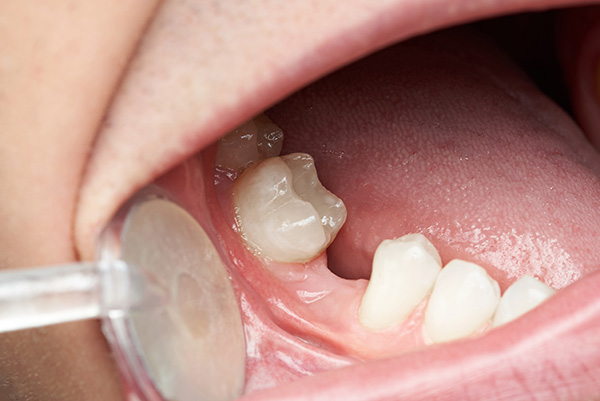 Missing teeth can result from many different things; regardless of how you lost your teeth, there are options for replacing missing teeth. There may be a stigma around dental care breaking the bank, but these options all have their pros and cons, which you should take into consideration.
Missing teeth can result from many different things; regardless of how you lost your teeth, there are options for replacing missing teeth. There may be a stigma around dental care breaking the bank, but these options all have their pros and cons, which you should take into consideration.
Do you need to replace missing teeth?
One option many consider is doing nothing. While the missing tooth may not be very visible or cause any immediate trouble with chewing, it can become detrimental to your dental health in the future. Here are some of the impacts you may encounter if you choose not to replace a missing tooth.
- Jaw bone integrity can wear as there is no longer root stimulation with the tooth missing.
- Slowly, other teeth will shift to make up for the lack of counterpressure from the missing tooth. This could affect chewing or even cause tooth decay or gum disease.
- The cost to fix these problems if they arise could be much more than using one of the actual options to replace missing teeth.
What can you do to replace missing teeth?
Dental Implants are possibly the most expensive route, but also the longest lasting. Dental implants involve the surgical placement of the implant anchor into the jawbone, similar to the root of a natural tooth. From there, a very natural feeling and looking cap is placed on the anchor and requires minimal follow-up from the dentist.
Implant-supported bridges are a similar option but more economical if you are missing several teeth in a row. Instead of having several single implants, there are only two implants placed—one on each end of the bridge and a bridged cap that needs follow-up and regular maintenance.
Still using the bridge idea, there is also an option to use existing teeth to place the bridges. No implants are required, no surgery is required, and the cost is much lower than listed previous options. The process involves filing down the existing teeth to place a cap and cement the bridge on top of the two filed teeth. This option does require regular care and can result in some long-term issues if not properly cared for.
Removable partial dentures use a metal clasp to fit perfectly in the mouth. These are very similar to full denture sets but are convenient because you can add teeth to the appliance if any other incident occurs and more teeth are lost. This is suggested to be the most affordable of the options to replace missing teeth.
The last option is only recommended for temporary use. The flipper is a cheap, painless, and light appliance used in most cases if a tooth is lost, but there is no immediate option to have it replaced using one of the other options. This device can be uncomfortable for some but is an effective way to keep your smile until you do something else.
Related Posts
Choosing the best option for replacing a missing tooth is a personal decision. When a person loses a tooth, it's important to replace it as soon as possible. Not only can missing teeth affect someone's appearance and self-confidence, but they also prevent the natural progression of the jawbone, which may lead to other dental problems…
If you are missing several teeth or all of your upper or lower teeth or even all the teeth in your mouth, you may be wondering, “What are my options for replacing missing teeth?” Full or partial dentures may be a good option for you. In this article, we’ll discuss what makes a good candidate…
Dental implants are a popular option for replacing missing teeth. While they offer the same aesthetic benefits as other replacement options, there are multiple other benefits provided by dental implants that alternatives fail to deliver.One crucial component of a dental implant is a titanium screw that is placed directly into the jawbone. The screw forms…
